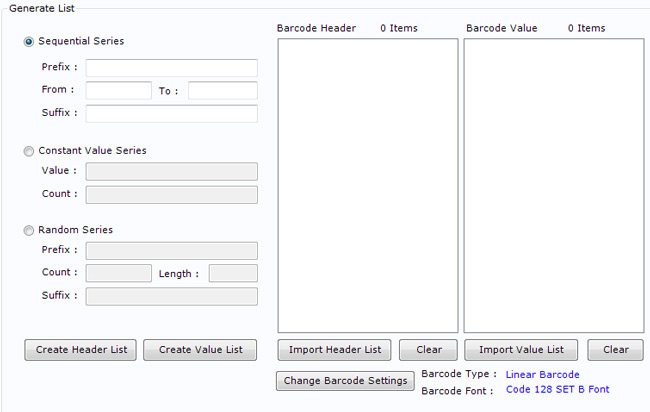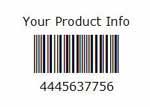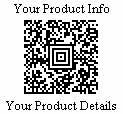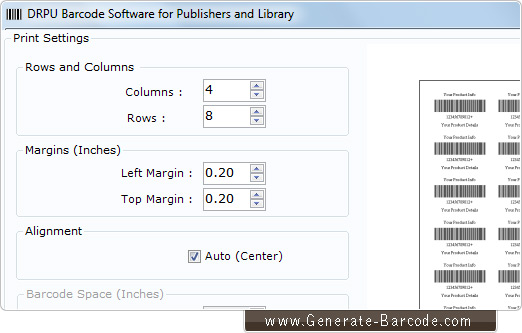(294). Start a Rainwater Harvesting Business
What is it? Rainwater harvesting (RWH) or recycling is a process by which one simply collects rainwater and then stores it until required. This process not only reduces the demand for water from utilities, but also keeps a lot of water out of the area’s drainage system, thereby helping to reduce flooding risks as well. It is being frequently used these days, however, the concept of water harvesting is not new for India. Water harvesting techniques had been evolved and developed centuries ago.
Ground water resource gets naturally recharged through percolation. But due to indiscriminate development and rapid urbainzation, exposed surface for soil has been reduced drastically with resultant reduction in percolation of rainwater, thereby depleting ground water resource. Rainwater harvesting is the process of augmenting the natural filtration of rainwater in to the underground formation by some artificial methods. "Conscious collection and storage of rainwater to cater to demands of water, for drinking, domestic purpose & irrigation is termed as Rainwater Harvesting."
Why harvest rainwater ?
This is perhaps one of the most frequently asked question, as to why one should harvest rainwater. There are many reasons but following are some of the important ones.
- To arrest ground water decline and augment ground water table
- To beneficiate water quality in aquifers
- To conserve surface water runoff during monsoon
- To reduce soil erosion
- To inculcate a culture of water conservation.
- Helps you cut down on your water bills (especially in cities where people have to buy water).
- Reduces demand on the municipal water supply.
- Makes efficient use of a valuable resource.
- Reduces the possibilities of the occurrence of natural calamities such as floods. *
- Prevents the contamination of ground water. Thus, rainwater harvesting is the need of the hour.
Why is it a good business idea? Public administration agencies in many cities are gearing up to make RWH mandatory. In early August, Bangalore passed an act that made RWH mandatory in buildings. According to the act, both new and old buildings, houses and apartments need to have the system in place within nine months. Considering the size of Bangalore, that’s a whole lot of houses and RWH systems to be installed. Add the annual maintenance services to this package and what you have is a gargantuan business opportunity. More importantly, the act is expected to be replicated across major cities, even for commercial buildings. So get on this business idea and see the raindrops falling into your ‘bank’.
Capital Required. Apart from the usual costs required to set up a business anywhere in India, it costs around Rs. 5,000 on an average to set up a roof-based RWH system, inclusive of the cost of materials and labor. However, this could vary depending on the size of the building. Our take? You need a maximum of Rs. 1 lakh to start this business.
Get started… The Centre for Science and Environment (CSE), Delhi, offers a five day certificate course on rainwater harvesting that teaches topics like principles, components, planning and designing among others. We suggest you take this up to know your trade better. Priced at around Rs. 8,800, it also gives you a chance to meet and interact with experts and professionals in the field of rainwater harvesting. A perfect launching pad for the bootstrapper in you.
Nowdays Govt have made a rule that rain water harvesting and sewerage treatment plants be provided in all the buildings that we construct.
How to harvest rainwater: Broadly there are two ways of harvesting rainwater: (i) Surface runoff harvesting (ii) Roof top rainwater harvesting Surface runoff harvesting: In urban area rainwater flows away as surface runoff. This runoff could be caught and used for recharging aquifers by adopting appropriate methods. Roof top rainwater harvesting (RTRWH): It is a system of catching rainwater where it falls. In rooftop harvesting, the roof becomes the catchments, and the rainwater is collected from the roof of the house/building. It can either be stored in a tank or diverted to artificial recharge system. This method is less expensive and very effective and if implemented properly helps in augmenting the ground water level of the area | |||
Components of the roof top rainwater harvesting system The illustrative design of the basic components of roof top rainwater harvesting system is given in the following typical schematic diagram/ The system mainly constitutes of following sub components: § Catchment § Transportation § First flush § Filter The surface that receives rainfall directly is the catchment of rainwater harvesting system. It may be terrace, courtyard, or paved or unpaved open ground. The terrace may be flat RCC/stone roof or sloping roof. Therefore the catchment is the area, which actually contributes rainwater to the harvesting system. | |||
Transportation Rainwater from rooftop should be carried through down take water pipes or drains to storage/harvesting system. Water pipes should be UV resistant (ISI HDPE/PVC pipes) of required capacity. Water from sloping roofs could be caught through gutters and down take pipe. At terraces, mouth of the each drain should have wire mesh to restrict floating material. First Flush First flush is a device used to flush off the water received in first shower. The first shower of rains needs to be flushed-off to avoid contaminating storable/rechargeable water by the probable contaminants of the atmosphere and the catchment roof. It will also help in cleaning of silt and other material deposited on roof during dry seasons Provisions of first rain separator should be made at outlet of each drainpipe. | |||
 | |||
Filter There is always some skepticism regarding Roof Top Rainwater Harvesting since doubts are raised that rainwater may contaminate groundwater. There is remote possibility of this fear coming true if proper filter mechanism is not adopted. Secondly all care must be taken to see that underground sewer drains are not punctured and no leakage is taking place in close vicinity. Filters are used fro treatment of water to effectively remove turbidity, colour and microorganisms. After first flushing of rainfall, water should pass through filters. There are different types of filters in practice, but basic function is to purify water. | |||
Sand Gravel Filter These are commonly used filters, constructed by brick masonry and filleted by pebbles, gravel, and sand as shown in the figure. Each layer should be separated by wire mesh. |  | ||
Charcoal Filter Charcoal filter can be made in-situ or in a drum. Pebbles, gravel, sand and charcoal as shown in the figure should fill the drum or chamber. Each layer should be separated by wire mesh. Thin layer of charcoal is used to absorb odor if any. |  | ||
PVC- Pipe filter This filter can be made by PVC pipe of 1 to 1.20 m length; Diameter of pipe depends on the area of roof. Six inches dia. pipe is enough for a 1500 Sq. Ft. roof and 8 inches dia. pipe should be used for roofs more then 1500 Sq. Ft. Pipe is divided into three compartments by wire mesh. Each component should be filled with gravel and sand alternatively as shown in the figure. A layer of charcoal could also be inserted between two layers. Both ends of filter should have reduce of required size to connect inlet and outlet. This filter could be placed horizontally or vertically in the system. |  | ||
Sponge Filter It is a simple filter made from PVC drum having a layer of sponge in the middle of drum. It is the easiest and cheapest form filter, suitable for residential units. |  | ||
Methods of Roof Top Rainwater Harvesting Storage of Direct use In this method rain water collected from the roof of the building is diverted to a storage tank. The storage tank has to be designed according to the water requirements, rainfall and catchment availability. Each drainpipe should have mesh filter at mouth and first flush device followed by filtration system before connecting to the storage tank. It is advisable that each tank should have excess water over flow system. Excess water could be diverted to recharge system. Water from storage tank can be used for secondary purposes such as washing and gardening etc. This is the most cost effective way of rainwater harvesting. The main advantage of collecting and using the rainwater during rainy season is not only to save water from conventional sources, but also to save energy incurred on transportation and distribution of water at the doorstep. This also conserve groundwater, if it is being extracted to meet the demand when rains are on. Recharging ground water aquifers Ground water aquifers can be recharged by various kinds of structures to ensure percolation of rainwater in the ground instead of draining away from the surface. Commonly used recharging methods are:- a) Recharging of bore wells b) Recharging of dug wells. c) Recharge pits d) Recharge Trenches e) Soak ways or Recharge Shafts f) Percolation Tanks Recharging of bore wells Rainwater collected from rooftop of the building is diverted through drainpipes to settlement or filtration tank. After settlement filtered water is diverted to bore wells to recharge deep aquifers. Abandoned bore wells can also be used for recharge. Optimum capacity of settlement tank/filtration tank can be designed on the basis of area of catchement, intensity of rainfall and recharge rate as discussed in design parameters. While recharging, entry of floating matter and silt should be restricted because it may clog the recharge structure. "first one or two shower should be flushed out through rain separator to avoid contamination. This is very important, and all care should be taken to ensure that this has been done." | |||
 | |||
Recharge Pits Recharge pits are small pits of any shape rectangular, square or circular, contracted with brick or stone masonry wall with weep hole at regular intervals. to of pit can be covered with perforated covers. Bottom of pit should be filled with filter media. The capacity of the pit can be designed on the basis of catchment area, rainfall intensity and recharge rate of soil. Usually the dimensions of the pit may be of 1 to 2 m width and 2 to 3 m deep depending on the depth of pervious strata. These pits are suitable for recharging of shallow aquifers, and small houses. |  | ||
Soak away or Recharge Shafts Soak away or recharge shafts are provided where upper layer of soil is alluvial or less pervious. These are bored hole of 30 cm dia. up to 10 to 15 m deep, depending on depth of pervious layer. Bore should be lined with slotted/perforated PVC/MS pipe to prevent collapse of the vertical sides. At the top of soak away required size sump is constructed to retain runoff before the filters through soak away. Sump should be filled with filter media. |  | ||
Recharging of dug wells Dug well can be used as recharge structure. Rainwater from the rooftop is diverted to dug wells after passing it through filtration bed. Cleaning and desalting of dug well should be done regularly to enhance the recharge rate. The filtration method suggested for bore well recharging could be used. |  | ||
Recharge Trenches Recharge trench in provided where upper impervious layer of soil is shallow. It is a trench excavated on the ground and refilled with porous media like pebbles, boulder or brickbats. it is usually made for harvesting the surface runoff. Bore wells can also be provided inside the trench as recharge shafts to enhance percolation. The length of the trench is decided as per the amount of runoff expected. This method is suitable for small houses, playgrounds, parks and roadside drains. The recharge trench can be of size 0.50 to 1.0 m wide and 1.0 to 1.5 m deep. |  | ||
Percolation tanks Percolation tanks are artificially created surface water bodies, submerging a land area with adequate permeability to facilitate sufficient percolation to recharge the ground water. These can be built in big campuses where land is available and topography is suitable. Surface run-off and roof top water can be diverted to this tank. Water accumulating in the tank percolates in the solid to augment the ground water. The stored water can be used directly for gardening and raw use. Percolation tanks should be built in gardens, open spaces and roadside green belts of urban area. | |||













































































